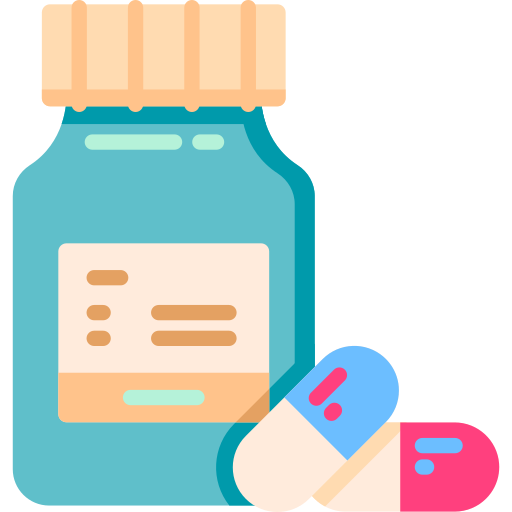
Type:60ml bot
Generic Name:Ciprofloxacin
Manufacturer:Julphar Bangladesh Ltd.
Price:৳100.00
Cystic fibrosis, Intra-abdominal infections, Meningitis, Peritonitis, Endocarditis, Anthrax, Otitis media, Septicaemia, Lower Respiratory Tract Infections, Cystitis, Gonorrhoea, Skin and skin structure infections, Nosocomial pneumonia, Urinary tract infections, Enteric fever, Bone and Joint Infections, Biliary tract infections, Surgical Prophylaxis, Gastroenteritis, Q fever, Acute Sinusitis, Cat scratch disease, Spotted fever, Typhus, Chanroid, Brucellosis, Typhoid and paratyphoid fever, Superficial ophthalmic infections, Otitis externa
May be taken with or without food. May be taken w/ meals to minimise GI discomfort. Do not take w/ antacids, Fe or dairy products. IV Administration Infuse 1-2 mg/mL (diluted in D5W or NS) into large vein over 60 minutes
Oral Adult Dose: For oral dosage & suspension: Urinary Tract infection: Acute uncomplicated: 250 mg twice daily for 3 days; Mild/Moderate: 250 mg twice daily for 7 to 14 days; Severe/Complicated: 500 mg twice daily for 7 to 14 days; Chronic Bacterial Prostitis : 500 mg twice daily for 28 days; Lower Respiratory Tract infection: Mild/Moderate: 500 mg twice daily for 7 to 14 days, Severe/Complicated : 750 mg twice daily for 7 to 14 days; Acute Sinusitis : 500 mg twice daily for 10 days; Skin and Skin Structure infection: Mild/Moderate : 500 mg twice daily for 7 to 14 days, Severe/Complicated : 750 mg twice daily for 7 to 14 days, Bone and joint infection: Mild/Moderate 500 mg twice daily for 4 to 6 weeks, Severe/Complicated : 750 mg twice daily for 4 to 6 weeks, Intra Abdominal Infection: 500 mg twice daily for 7 to 14 days, Infectious Diarrhea: Mild/Moderate/Severe: 500 mg twice daily for 5 to 7 days, Typhoid Fever : 500 mg twice daily for 10 days, Urethral & Cervical Gonococcal Infections: Uncomplicated: 250 mg Single dose. Ciprofloxacin extended release: PO Adults 500–1,000 mg q24h. For IV infusion : Urinary Tract Infection: Mild to Moderate: 200 mg 12 hourly for 7-14 days;Severe or Complicated: 400 mg 12 hourly for 7-14 days; Lower Respiratory Tract infection: Mild to Moderate: 400 mg 12 hourly for 7-14 days; Severe or Complicated: 400 mg 8 hourly for 7-14 days; Nosocomial Pneumonia: Mild/Moderate/Severe: 400 mg 8 hourly for 10-14 days; Skin and Skin Structure: Mild to Moderate: 400 mg 12 hourly for 7-14 days; Severe or Complicated: 400 mg 8 hourly for 7-14 days; Bone and Joint Infection: Mild to Moderate: 400 mg 12 hourly for more than 4-6 weeks; Severe/Comlicated: 400 mg 8 hourly for more than 4-6weeks; Intra abdominal (Acute abdomen): Complicated: 400 mg 12 hourly for 7-14 days; Acute Sinusitis: Mild/Moderate: 400 mg 12 hourly for10 days: Chronic Bacterial Prostatitis: Mild/Moderate: 400 mg 12 hourly for 28 Days.
Child Dose: PO 20–40 mg/kg/day, max 1.5 g/day q12h. IV 20–30 mg/kg/day, max 1.2 g/day q12h. Children and adolescents: RTI & GI infections: Neonate-15mg/kg twice daily, Child (1 month -18 years)-20mg/kg (max 750 mg) twice daily; UTI: Neonate-10 mg/kg twice daily, Child (1 month -18 years)-10mg/kg (max 750 mg) twice daily; Pseudomonal lower respiratory tract infection in cystic fibrosis: Child (1 month -18 years) - 20mg/kg (max 750 mg) twice daily; Anthrax (treatment & post exposure prophylaxis): Child (1 month -18 years) - 20mg/kg (max 750 mg) twice daily.
Renal impairment CrCl >50 mL/min: Dose adjustment not necessary CrCl 30-50 mL/min: 250-500 mg PO q12hr CrCl <30 mL/min: Extended-release, 500 mg PO q24hr CrCl 5-29 mL/min: 250-500 mg PO q18hr or 200-400 mg IV q18-24hr Some clinicians suggest decreasing dose but not frequency of administration Hemodialysis: 0.25-0.5 g PO q12hr or 0.2-0.4 g IV q24hr Peritoneal dialysis: 0.25-0.5 g PO q8hr or 0.2-0.4 g IV q24hr
Hypersensitivity. Not to be used concurrently with tizanidine. Avoid exposure to strong sunlight or sun lamps during treatment.
Ciprofloxacin promotes breakage of double-stranded DNA in susceptible organisms and inhibits DNA gyrase, which is essential in reproduction of bacterial DNA.
Epilepsy, history of CNS disorders; severe renal or hepatic dysfunction; G6PD deficiency; maintain adequate hydration; myasthaenia gravis. Caution when used in patients with QT prolongation or risk factors e.g. bradycardia, pre-existing cardiac disease or uncorrected electrolyte disturbances. Discontinue treatment if patients experience tendon pain, inflammation or rupture. Avoid usage in methicillin-resistant staphylococcus aureus (MRSA) infections due to high level of resistance. May impair ability to drive or operate machinery. Safety and efficacy have not been established in pregnant and lactating women. Not to be used in children <18 yr; except where benefit clearly exceeds risk. Lactation: Drug enters breast milk; use not recommended (American Academy of Pediatrics Committee states that drug is compatible with nursing)
1-10% Nausea (3%),Abdominal pain (2%),Diarrhea (2% adults; 5% children),Increased aminotransferase levels (2%),Vomiting (1% adults; 5% children),Headache (1%),Increased serum creatinine (1%),Rash (2%),Restlessness (1%) <1% Acidosis,Allergic reaction,Angina pectoris,Anorexia,Arthralgia,Ataxia,Back pain,Bad taste,Blurred vision,Breast pain,Bronchospasm,Diplopia,Dizziness,Drowsiness,Dysphagia,Dyspnea,Flushing,Foot pain,Hallucinations,Hiccups,Hypertension,Hypotension,Insomnia,Irritability,Joint stiffness,Lethargy,Migraine,Nephritis,Nightmares,Oral candidiasis,Palpitation,Photosensitivity,Polyuria,Syncope,Tachycardia,Tinnitus,Tremor,Urinary retention,Vaginitis Potentially Fatal: Anaphylactoid reaction; cardiopulmonary arrest.
Pregnancy category: C Lactation: Drug enters breast milk; use not recommended (American Academy of Pediatrics Committee states that drug is compatible with nursing)
May increase plasma concentrations of CYP1A2 substrates (e.g. clozapine, ropinirole, theophylline). Enhances effect of oral anticoagulants (e.g. warfarin) and glibenclamide. Increased toxicity of methotrexate. Plasma concentrations may be increased by probenecid. Reduced absorption w/ oral multivitamins and mineral supplements containing divalent or trivalent cations (e.g. Fe, Zn, Ca) and antacids containing Al, Ca or Mg. Concomitant use w/ class IA antiarrhythmics (e.g. quinidine, procainamide), class III antiarrhythmics (e.g. amiodarone, sotalol), TCAs, macrolides and antipsychotics may result in additive effects on QT interval prolongation. Concurrent use w/ corticosteroids may increase risk of severe tendon disorders. Increased risk of CNS stimulation w/ NSAIDs. Altered serum concentrations of phenytoin. Potentially Fatal: Marked elevation in serum levels of tizanidine which is associated w/ potentiated hypotensive and sedative effect.